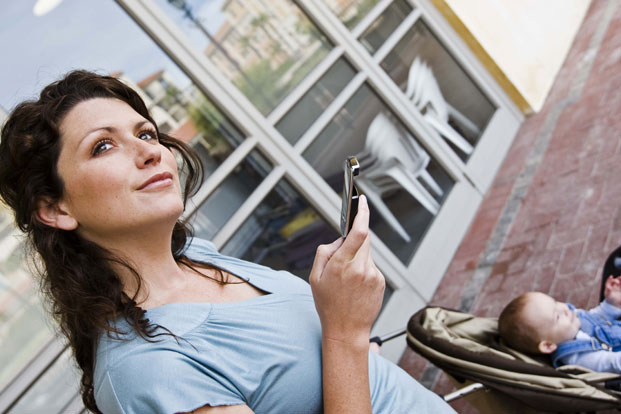It’s a common problem. You are driving home from work and thinking about the long weekend ahead and the plans to get together with a group of friends. But you just remembered that you forgot to tell a certain friend where everyone is meeting up. Reaching for the phone, you begin a quick text message. No worries, you think. It’ll only take a few seconds for just a quick note. You glance down as the car continues along at 35 miles per hour.
Up ahead, a car hesitates in the intersection. Its elderly driver was going to make a left, but then decided to go right. The driver starts to turn and blam! You never saw it coming, because you were focused on the text message, not the traffic ahead of you.
Each year, distracted driving causes a lot of road incidents. The United States Department of Transportation reports that more than 3,000 people die in motor vehicle accidents in which distracted driving was to blame. The DOT also notes that more than 400,000 people were injured as a result of distracted driving.
Texting, while not the total problem, shares a healthy portion of the blame for distracted driving accidents, which is why there are campaigns reminding us that “it can wait,” no matter how vital the message.
More Phones Than People
There are now more smartphones than Americans, which means there are more than 300 million phones on the market. That’s a lot of temptation to text, which means that the accident rate is likely to increase.
Driving is serious business. You are moving through space at speeds no human can duplicate on foot, with only a thin sheet of metal between you and devastating results. Yet driving is such a common, daily occurrence that we take its dangers for granted. After all, we’re sitting in a comfortable seat, there’s music playing, perhaps we have a drink resting in the console and we’re in command.
All of that can cause you to miss the driver who signaled and stopped, a child running into the roadway or a huge pothole in the center of the road.
You don’t have much time to stop. It’s hard to calculate precisely how much time there is to react because the weather conditions, the condition of your vehicle, your physical health and the road grade are all variable. However, if you are driving at 30 miles per hour, you will travel approximately 45 feet in about one second, according to the U.S. DOT. That’s less than several car lengths, which means you will likely have to hit the brakes hard and may skid.
Bicyling While Texting
Driving while texting has a high likelihood of trouble attached, and bicycling while texting is equally dangerous, particularly if it occurs when vehicle traffic shares the road.
Cyclists already face a number of issues when they travel the same streets as automobiles. There may not be bike lanes, which means that cars can come uncomfortably close, doors can open unexpectedly, and the same dangers that automobiles encounter – pedestrians dashing into the road, cars turning without warning, potholes – can crop up and cause disaster.
But add in texting, and you have a further hindrance to an already dangerous trip. Bicyclists often move at the same speed as automobile traffic, particularly in cities. The difference is the bicycle offers little protection if an accident occurs. It’s just you and air between the road, and if you’re traveling at high speeds, the results can be fatal. That’s why some cities and states have already passed laws prohibiting texting while bicycling, much as they prohibit motor vehicle operators from doing so.
Walking While Texting
Walkers don’t get off easily, either. Philadelphia found the problem of walking while texting dangerous enough that they decided to crack down on the problem. Law enforcement officials were ordered to stop and warn pedestrians of the dangers associated with not looking where they were stepping.
After all, sidewalks have chips and dips, elderly pedestrians are not as agile in getting out of the way of distracted walkers, and bicycles have been known to ride on the sidewalk. All pose a significant hazard, and it’s only compounded by a walker too distracted to notice.
Think of the humiliation factor as well – no one wants to be the chump who walks into a street lamp or telephone pole.
Dietrich Jehle, a professor of emergency medicine at the University of Buffalo, claimed that distracted walking resulted in more injuries than distracted driving. He said that London was a major center of walking injuries, so much so that bumpers were actually placed on light posts to cushion the blow from walking into them.
While driving produces more severe injuries, distracted walking produces injuries more frequently, Jehle said. The number of distracted walking injuries may be underreported, he claims, particularly because it’s embarrassing to the victim.
An Ohio State University study found that pedestrian emergency room visits caused by cell phone distraction injuries tripled in the years between 2004 and 2010, even though the total of pedestrian injuries decreased.
What to Do
Addressing the issue of distracted locomotion is a dilemma. Laws can be passed, but because texting is such a quick and often surreptitious habit, the temptation to violate the legal taboo is always there. Like it or not, texting has become a human habit, and the need to be in touch constantly with work or one’s peers is going to be difficult, if not impossible, to break.
That’s why the new advertisements are taking a different approach. Rather than focusing on penalties, they remind us that most messages can wait for a safer moment to relay. Things like getting together, movie times and plans for later in the evening can be made when you are safely off the road. If it’s a true emergency, pulling over to the side of the road or stopping while bicycling or walking isn’t a burdensome gesture.

Leave a Reply